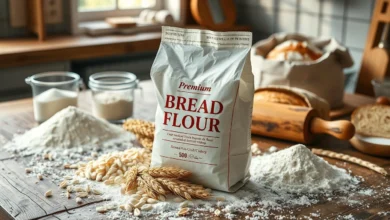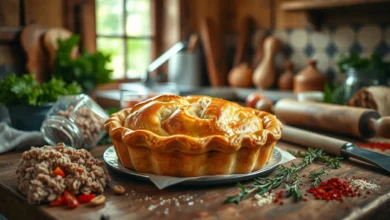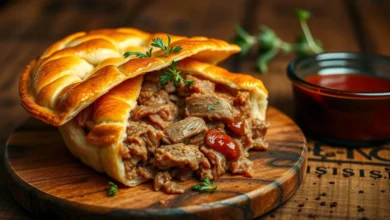how do you make vermicelli noodles

Vermicelli noodles are a favorite in many Asian dishes. They are known for their thin, delicate texture. They are great in Vietnamese pho, Chinese stir-fries, and Filipino pancit. Learning to make them at home opens up new culinary adventures.
Key Takeaways
- Vermicelli noodles are a thin, delicate type of pasta popular in Asian cuisines.
- Making homemade vermicelli noodles involves mixing a simple dough, kneading, rolling, and cutting the noodles.
- The dough requires just a few basic ingredients: flour, water, and sometimes salt.
- Drying the noodles properly is crucial for achieving the right texture.
- Vermicelli noodles can be flavored with a variety of seasonings and sauces to suit your taste preferences.
Introduction to Vermicelli Noodles
Vermicelli noodles are thin, delicate pasta loved in Asian cuisines for centuries. They are made from grains like rice, wheat, and mung bean. Each grain gives a unique texture and flavor. Vermicelli noodles are a favorite in many dishes, from stir-fries to soups.
What are Vermicelli Noodles?
Vermicelli noodles are known for their thin, thread-like shape. This shape helps them soak up flavors well. They add a light, airy feel to dishes. You can find them in many Asian cuisines, like Chinese, Vietnamese, Thai, and Filipino.
History and Origins
The history of vermicelli noodles starts in ancient China and Southeast Asia. They were first made from millet and wheat flour in the Han Dynasty. As time went on, different grains and cooking methods were used.
Now, vermicelli noodle recipes are found in many Asian traditions. They are key in dishes like Vietnamese bún chả and Thai pad Thai. Vermicelli noodles remain a favorite in many Asian dishes.
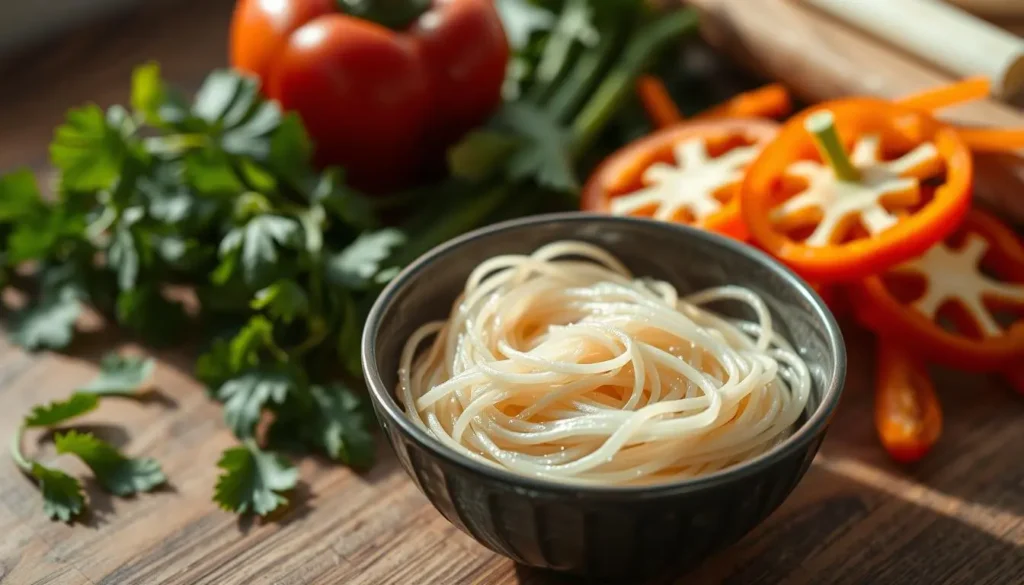
Ingredients for Homemade Vermicelli Noodles
Making homemade vermicelli noodles is easy and only needs a few ingredients for vermicelli noodles. You can use all-purpose flour, rice flour, or mung bean flour. The basic ingredients for these thin noodles are the same. Let’s look at what you need to start.
The main ingredients for vermicelli noodles are:
- Flour – You can use all-purpose flour, rice flour, or mung bean flour. Your choice depends on what you like and the noodle’s texture.
- Water – You’ll need water to make the dough.
- Salt – A little salt adds flavor and helps the dough stick together.
The exact ratios of these vermicelli noodle ingredients might change with different recipes. But these three are the base for making vermicelli noodles at home. With just a few ingredients, you can make tasty homemade vermicelli noodles for many dishes.
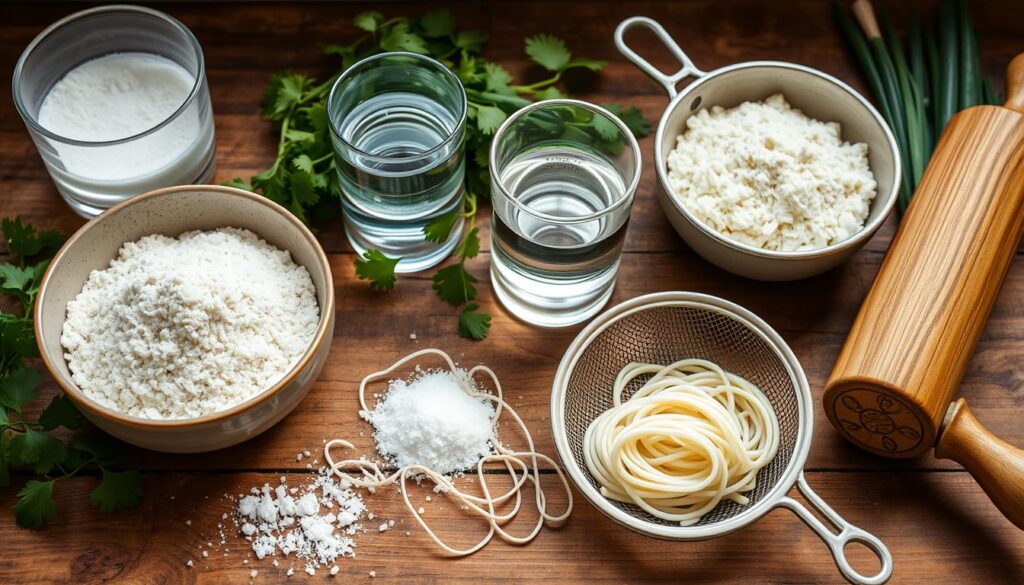
“The key to perfect homemade vermicelli noodles lies in the balance of the essential ingredients for vermicelli noodles.”
Preparing the Dough
The first step in how do you make vermicelli noodles making delicious homemade vermicelli noodles is to prepare the dough. This step is crucial. It involves mixing the right ingredients and kneading the dough to get the perfect texture.
Mixing the Dough
To start, you need flour, water, and salt for how to prepare vermicelli noodle dough. In a big bowl, mix the flour and salt. Then, add the water slowly while mixing. Keep mixing until the dough comes together well.
Kneading the Dough
After the vermicelli noodle dough forms, knead it. Knead it hard for a few minutes. Use your palms to stretch and fold the dough. This makes the dough smooth and elastic, ready for rolling and cutting.
Being patient and detailed is key when making vermicelli noodle dough. Spend time mixing and kneading well. You’ll get authentic, homemade vermicelli noodles that will wow everyone.
Rolling and Cutting the Noodles
After making the vermicelli noodle dough, it’s time to roll and cut the noodles. You can do this by hand or with a pasta machine. The goal is to get thin, uniform noodles for your dish.
Using a Pasta Machine
A pasta machine makes rolling and cutting vermicelli noodles easier. Start by thinning the dough through the machine’s settings. This way, you get the right vermicelli noodle texture without any issues.
- Begin with the thickest setting on your pasta machine and run the dough through.
- Gradually decrease the thickness setting, running the dough through the machine several times, until you reach the desired thinness.
- Once the dough is thin enough, use the cutting attachment on your pasta machine to slice the dough into long, thin vermicelli noodles.
Cutting noodles by hand is more work but can look homemade. Use a sharp knife or pizza cutter to cut the dough into long, thin strips.
Drying the Vermicelli Noodles
After cutting your homemade vermicelli noodles, drying them is the next important step. This ensures they cook perfectly and don’t stick together. Here are a few ways to air dry your noodles:
- Lay Them Out – Place the noodles in a single layer on a clean surface like a baking sheet or drying rack. This helps them dry evenly.
- Let Them Rest – Let the noodles air dry for a few hours until they’re dry and firm. The drying time depends on humidity and temperature.
- Flip Occasionally – To dry them evenly, flip or stir the noodles every 30 minutes or so.
The drying process for vermicelli noodles is vital and should not be rushed. Proper air drying is essential for the right texture and to prevent sticking. With patience and attention, you can learn how to dry vermicelli noodles at home.
| Drying Method | Pros | Cons |
|---|---|---|
| Air Drying | Preserves noodle textureNo additional equipment neededEnvironmentally friendly | Requires more timeSusceptible to humidity/temperature changes |
| Oven Drying | Faster drying timeMore controlled environment | Can potentially overcook noodlesRequires additional equipment |
The drying process for vermicelli noodles is key and needs patience and detail. By learning to air dry vermicelli noodles, you’ll make perfectly textured homemade vermicelli every time.
Cooking Vermicelli Noodles
Learning to cook vermicelli noodles is key to making tasty dishes. Whether it’s a classic Asian stir-fry or a warm noodle soup, knowing how to boil them right can boost your cooking skills. Here are some vermicelli noodle cooking tips to help you succeed.
Boiling Tips
Here’s how to boil vermicelli noodles for the best results:
- Start by boiling a big pot of water. Vermicelli noodles need room to cook right, so pick a big pot.
- Slowly add the noodles to the boiling water. Stir them now and then to stop them from sticking.
- Cook the noodles for 2-3 minutes, until they’re tender but not mushy. Watch the time closely to avoid overcooking.
- Drain the noodles well with a colander or strainer. Cold water rinse helps stop cooking and keeps them from getting mushy.
It’s important to watch the cooking time and texture when boiling vermicelli noodles. With practice, you’ll get the perfect texture every time.
“The key to perfectly cooked vermicelli noodles is to not overcook them. Paying attention to the time and texture can make all the difference in the world.”
By using these vermicelli noodle cooking tips, you’ll get better at how to cook vermicelli noodles. You’ll make dishes that taste authentic and delicious.
How Do You Make Vermicelli Noodles?
Making homemade vermicelli noodles is a fun and tasty project. Whether you’re looking for a real vermicelli noodle recipe or want to learn how to make them at home, it’s easy and rewarding. Here’s a simple guide to making delicious vermicelli noodles in your kitchen.
- Begin by making the dough. Mix flour, water, and a bit of salt in a big bowl. Knead it until it’s smooth and elastic.
- When the dough is ready, you can roll it out by hand or use a pasta machine. Aim for a thin, delicate noodle for traditional vermicelli.
- After shaping the noodles, dry them well. Lay them out on a clean, dry surface. Let them air dry for a few hours until they’re completely dry.
- To cook, boil a pot of salted water. Add the dried noodles gently and cook for 2-3 minutes. They should be just right.
By following these easy steps, you can make a tasty batch of homemade vermicelli noodles. Try different methods to find what works best for you and your kitchen.
“The key to perfect vermicelli noodles is in the drying process. Take your time and let them air dry until they are completely dehydrated for the best results.”
Variations and Flavors
There’s a whole world of flavors you can try with homemade vermicelli noodles. By using different flours and adding various seasonings, you can make many unique dishes.
Seasoning Ideas
Adding spices and herbs can change the taste of your vermicelli noodles. Try using:
- Garlic, minced or powdered
- Fresh ginger, grated
- Chili peppers, finely chopped or crushed
- Citrus zest, such as lemon or lime
- Toasted sesame seeds
- Fragrant herbs like basil, cilantro, or mint
These seasonings can be added to the dough or used on cooked noodles. This lets you try many vermicelli noodle flavor variations and different vermicelli noodle recipes.
Trying out seasoning ideas for vermicelli noodles lets you make dishes you love. It’s a fun way to explore new tastes and recipes.
Serving Suggestions
Discover the many ways to enjoy homemade vermicelli noodles. They go well with proteins, veggies, and sauces, making them a key part of Asian dishes.
Try sautéing noodles with grilled meats like chicken, beef, or shrimp. Add fresh veggies like carrots, bell peppers, and bean sprouts. Finish with a rich sauce like teriyaki or hoisin. This mix of tender noodles, juicy meats, and crunchy veggies makes a perfect meal.
For a light meal, turn noodles into a salad. Mix them with julienned veggies, fresh herbs, and a tangy dressing. The noodles’ soft texture and the salad’s bright flavors and crunch are a great match.
Vermicelli noodles are also great in soups and broths. Add them to Vietnamese pho or Thai coconut curry. They soak up the broth’s rich flavors, enhancing the dish’s bold tastes.
| Dish Idea | Protein | Vegetables | Sauce/Dressing |
|---|---|---|---|
| Stir-Fried Vermicelli Noodles | Chicken, Beef, Shrimp | Carrots, Bell Peppers, Bean Sprouts | Teriyaki, Hoisin |
| Vermicelli Noodle Salad | None | Cucumber, Cabbage, Mint | Lime Vinaigrette |
| Vermicelli Noodle Soup | Chicken, Beef | Onion, Mushrooms, Bok Choy | Pho, Coconut Curry |
There are countless ways to serve vermicelli noodles. Whether you stir-fry, make a salad, or a soup, these noodles will make your meal special.
Storing Homemade Vermicelli Noodles
Keeping your homemade vermicelli noodles fresh is key. Once they’re dry, you can store them to enjoy for weeks. Let’s look at the best ways to store homemade vermicelli noodles and preserve your vermicelli noodle creations.
Airtight Storage for Short-Term
For short-term storage, use an airtight container or ziplock bag in the fridge. This keeps them fresh for up to 1 week.
Freezing for Longer Shelf Life
For longer storage, the freezer is best. Store them in an airtight container or freezer-safe bag for months. Just thaw in the fridge before cooking.
| Storage Method | Shelf Life |
|---|---|
| Refrigerator (airtight container or ziplock bag) | Up to 1 week |
| Freezer (airtight container or freezer-safe bag) | Several months |
Follow these vermicelli noodle storage tips to keep your noodles fresh longer. This way, you can enjoy them whenever you want.
Conclusion
Making homemade vermicelli noodles is a fun and rewarding journey. It lets you enjoy the real tastes of Asian food. By following this guide, you’ve learned how to make delicious vermicelli noodles from scratch.
These noodles are great in soups, stir-fries, or as a main dish. Your homemade noodles will surely wow your loved ones.
Learning to make vermicelli noodles has deepened your love for Asian cooking. You now know how to pick the best ingredients and make the dough just right. You’ve also learned how to dry them perfectly.
These skills are useful for many Asian dishes. You can now try different flavors and seasonings with your vermicelli noodles.
Remember, making vermicelli noodles from scratch is rewarding and lets you control the quality. Enjoy the joy of making something special in your kitchen. Your homemade noodles will take you on a flavorful trip to Asia.
Related Topics
Reliable sources
How to Cook Vermicelli Noodles (No Mushiness or Clumping)
FAQ
What are Vermicelli Noodles?
Vermicelli noodles are thin, string-like pasta used in Asian dishes. They’re made from grains like rice, wheat, or mung bean. They have a delicate, slightly chewy feel.
What Ingredients Do I Need to Make Homemade Vermicelli Noodles?
To make vermicelli noodles at home, you need flour, water, and salt. The type of flour can vary, but these basics are key for the dough.
How Do I Prepare the Dough for Vermicelli Noodles?
First, mix flour, water, and salt to form a dough. Then, knead it well. This makes the dough smooth and elastic.
How Do I Roll and Cut the Vermicelli Noodles?
Roll and cut the dough to make noodles. You can use a pasta machine or do it by hand. Hand-cutting gives a rustic look.
How Do I Dry the Homemade Vermicelli Noodles?
Lay the noodles out to dry. Use a baking sheet or drying rack. Let them air dry for hours until firm. This step is key for texture and preventing sticking.
How Do I Cook the Homemade Vermicelli Noodles?
Cook the noodles in boiling water. Stir occasionally. Cook for 2-3 minutes until tender. Be careful not to overcook.
What Variations and Flavors Can I Experiment With?
You can add flavor to your noodles. Try different flours for texture and taste. Use seasonings like garlic, ginger, or chili peppers in the dough or as a seasoning.
How Do I Store Homemade Vermicelli Noodles?
Store noodles in an airtight container or bag in the fridge for up to a week. For longer storage, freeze them. Thaw in the fridge before cooking.
